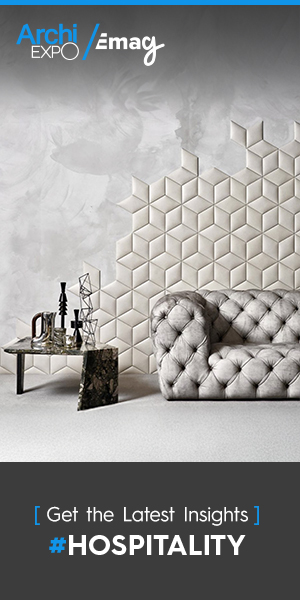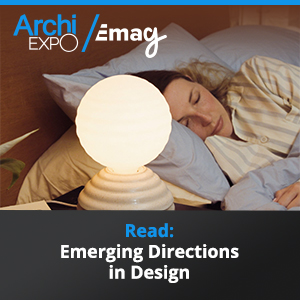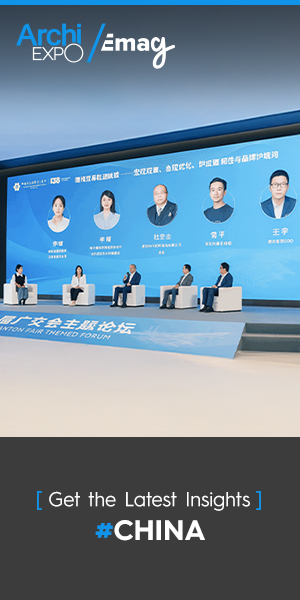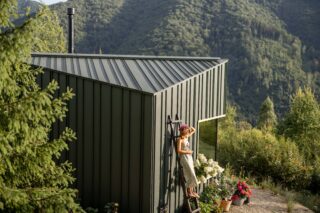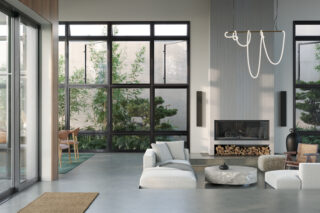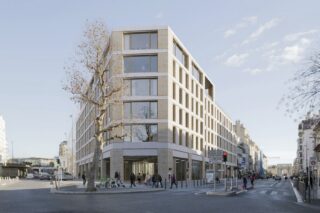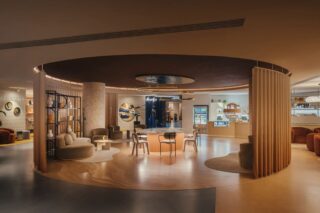Our guest contributor Jana Montero, Senior VP at UpSpring, brings insights from New York’s finest design event ICFF and the shifting design industry.
The International Contemporary Furniture Fair (ICFF) brought over 450 exhibitors and 13,000 design professionals to New York City’s Jacob K. Javits Convention Center for three days of product showcases, networking, and industry talks. This year’s theme, “Designing in Harmony,” aimed to celebrate diversity and drive meaningful connections in a year marked by economic uncertainties and global challenges.
Our team at UpSpring took to the show floor to see for ourselves how this theme played out. One thing was abundantly clear—the design industry is navigating a time of tremendous change, due to shifting economic landscapes, impact of climate change, and rapid technological advancements. Despite these shifts that may seem unsettling, the energy on the floor was one of liveliness, playfulness, and cautious optimism, highlighting the many dualities that designers and manufacturers are contending with in today’s world.
Physical Presence Still Matters in a Virtual World
In a talk hosted by the American Society of Interior Designers (ASID), speakers Lindsey Koren, Director, Communications for the organization and Nikita Madhyani, founder, NM Design Studio, emphasized the generational shifts driving the future of interior spaces. As millennials reach peak purchasing power and Gen Zers become business leaders themselves, the definitions of what we consider luxury is shifting. Younger generations are prioritizing experiences—underscoring a desire for “IRL” connection in an era where everything from work to school to grocery shopping can be done online.
The brands and creators driving the most engagement at ICFF were those offering activations and experiences that invited attendees to do more than take a quick glance (we’re certain almost no one left the convention center without climbing into CJ Hendry’s tongue-in-cheek adult balloon playground “Keff Joons!).
The booth that took the prize for best experience (quite literally, taking home “Best Booth Design” in ICFF’s own Editor Awards) was the enchanting, ethereal world created by Larose Guyon’s hanging chandeliers engulfed in gauzy drapery. The nature-inspired, cascading collections on display, Abysse and Saule, promise to lend their otherworldly, immersive qualities to any interior space.
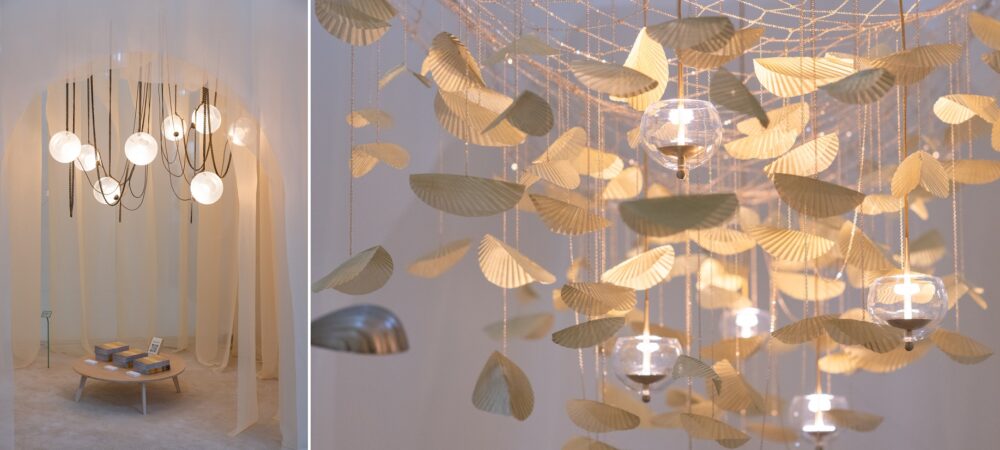
Designing for Joy in a Time of Heightened Anxiety
As Koren and Madhyani also noted, pulling from ASID’s 2025 Trends Outlook Report, unhappiness is on the rise. Due to the loneliness epidemic, Gen Z in particular has reported staggering rates of mental illness. By contrast, or perhaps in response, design is being called upon to help reduce anxiety and foster wellbeing. In walking this year’s show, it could not be more evident that brands are truly embracing “joyful design” with bright colors, curvilinear shapes, and other playful elements.
Where this was perhaps the most visible was in the WANTED Launch Pad section of the show where emerging designers have a platform for showcasing their ideas. Two standout products debuting at ICFF were Studio Bucky’s Portals Mirror and Hannah Via’s Meadow Sconce.
Inspired by Ireland’s ancient portal tombs, Studio Bucky’s chunky, pastel blue monolith-like mirrors aimed to “[invite] moments of wonder into everyday life” — again speaking to emerging generations’ desire for experiential design. Likewise, Hannah Via’s quirky hand-tufted sculptural wall light inspired by a Norwegian wildflower meadow promises to bring a layer of mirth to your interiors. Visitors who spoke with the designer were encouraged to touch, feel, and interact with the piece.
While faced with rising anxieties and discontent, these emerging designers remind us not to take ourselves too seriously.
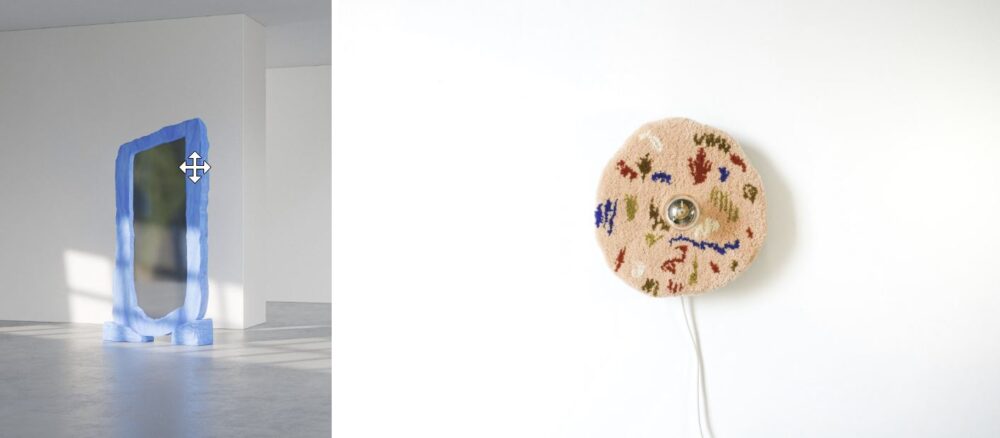
Right: Meadow Sconce by Hannah Via | Photo Courtesy of Hannah Via
Craftmanship and the Handmade: Creativity in the Age of AI
The rapid advancement of AI and other emerging technologies was also a big topic among panelists and show attendees. In a talk hosted by Dezeen editor Ben Dreith, speakers grappled with the uncertainty of a future in which machines become replacements for human workers. They weighed the pros, cons, and the risks of job loss against the possibilities of AI to break down barriers for those who have been historically left out of the conversation. In the face of this staggering technological growth, what stood out to us were the brands on display doubling down on the value of the handmade.
In this vein, Cuff Studio unveiled select pieces from its 2025 Spring collection “Within,” including “Puddling Cascade” described by the brand as “a waterfall of winding, knotted and puddling rope weaved with puckered hand-blown seeded molted glass shades.” The adventurous, sculptural light fixture is a celebration of form that reads as distinctly human.
Presented in the “Bespoke Salon”—an environment designed by MAWD | March and White Design to provide guests with a space to explore and connect in an intimate setting—was Edelweiss Piano’s debut of “The Luna.” With striking forms, the sculptural piece is a new edition to its collections of pianos that the brand proudly notes are “lovingly handcrafted by a select team of master British artisans.” In a delightful juxtaposition of human craft and machine, the self-playing piano didn’t fail to draw the eyes of all who passed by.
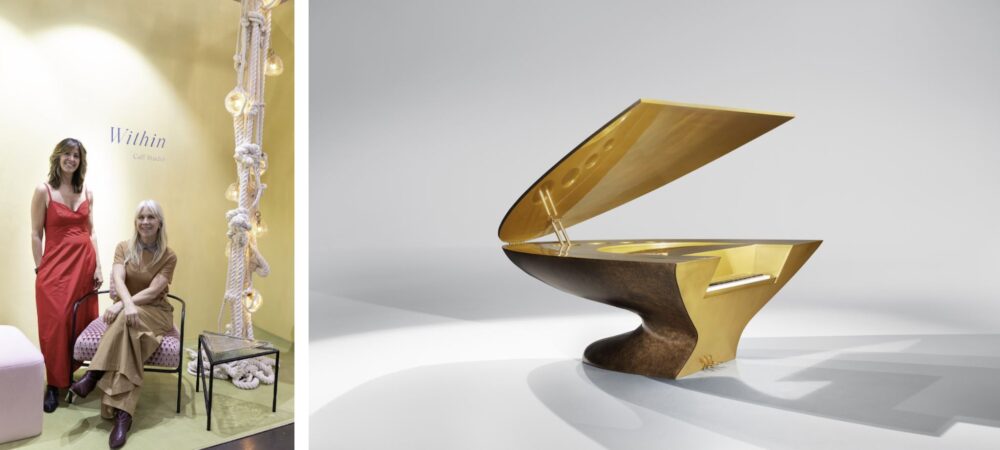
Right: The Luna by Edelweiss Pianos | Photo Courtesy Edelweiss Pianos
Celebrations of Nature Amidst a Climate Crisis
Another topic not to be ignored at this year’s conference was the current state of our climate crisis. Speakers, designers, and exhibitors in turn contented with their role in addressing this challenge while also celebrating all that the natural world has to offer.
One of the most compelling brand presentations was the U.S. launch of MORPHO, a new collection of sculptural outdoor furniture created by music festival Tomorrowland in collaboration with Ethnicraft. Set amidst a jungle-inspired backdrop of greenery, the delightfully biophilic-inspired furniture collection draws its delicate forms from the pattern of a dragonfly’s wings. The collection reminds us all to grasp the fleeting beauty of our natural world, before more of it is lost.
Other brands sought to directly tackle the topic of waste in the furniture industry. Taking home the “Best of Launch Pad” prize for furniture was estudio pm, which presented a sculptural furniture collection made of entirely reclaimed textiles. “By honoring what once was,” the brand notes, “we create what’s next—turning fragments of the past into purposeful, artful creations within a sustainable circular economy.”
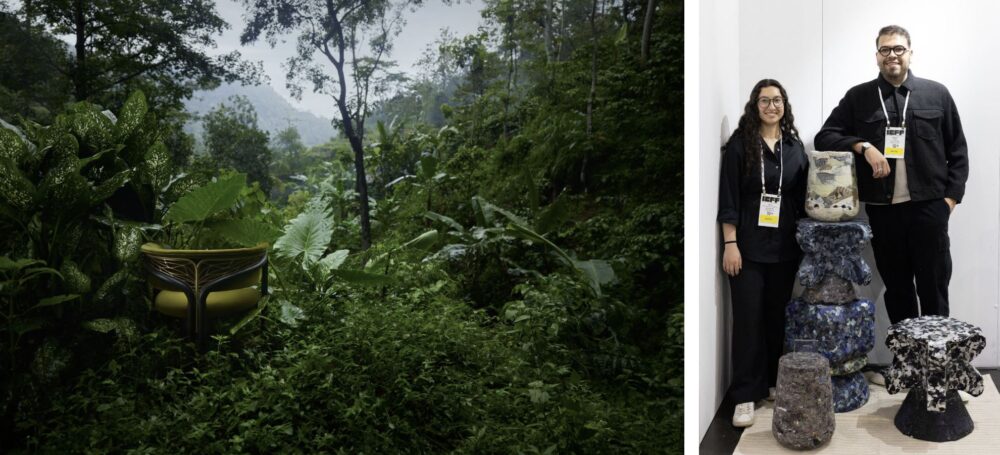
Right: The Herencia Tótem Collection by estudio pm | Jenna Bascomb Photography
Takeaways: Crossing Boundaries
In conversation with Dreith, Beatrice Galilee, Co-Founder of The World Around, urged audiences to consider the importance of making connections across boundaries—public/private, national/international, or emerging/established. “The energy and capacity of young people to change spaces and mobilize,” the speakers argued, should be supported by state funding and partnerships with established companies. This sentiment was, by and large, supported by ICFF as an institution, with its commitment to serving as a gathering space for visitors from over 35 countries and providing emerging designers with a platform to present the design solutions of tomorrow.



Jana Montero, Senior Vice President | Senior Vice President | Culture, Content and Business Development, UpSpring


